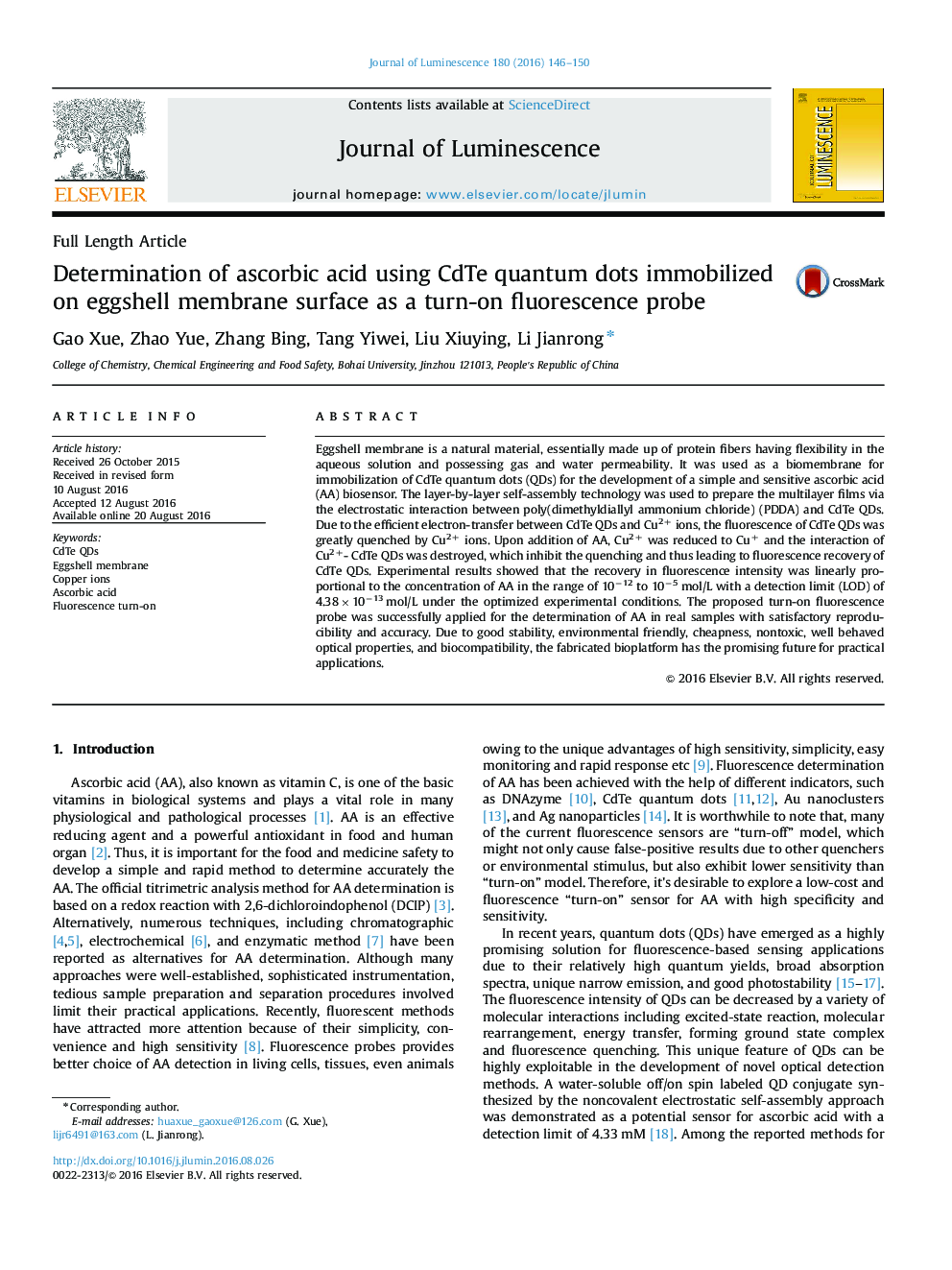| Article ID | Journal | Published Year | Pages | File Type |
|---|---|---|---|---|
| 5398143 | Journal of Luminescence | 2016 | 5 Pages |
Abstract
Eggshell membrane is a natural material, essentially made up of protein fibers having flexibility in the aqueous solution and possessing gas and water permeability. It was used as a biomembrane for immobilization of CdTe quantum dots (QDs) for the development of a simple and sensitive ascorbic acid (AA) biosensor. The layer-by-layer self-assembly technology was used to prepare the multilayer films via the electrostatic interaction between poly(dimethyldiallyl ammonium chloride) (PDDA) and CdTe QDs. Due to the efficient electron-transfer between CdTe QDs and Cu2+ ions, the fluorescence of CdTe QDs was greatly quenched by Cu2+ ions. Upon addition of AA, Cu2+ was reduced to Cu+ and the interaction of Cu2+- CdTe QDs was destroyed, which inhibit the quenching and thus leading to fluorescence recovery of CdTe QDs. Experimental results showed that the recovery in fluorescence intensity was linearly proportional to the concentration of AA in the range of 10â12 to 10â5Â mol/L with a detection limit (LOD) of 4.38Ã10â13Â mol/L under the optimized experimental conditions. The proposed turn-on fluorescence probe was successfully applied for the determination of AA in real samples with satisfactory reproducibility and accuracy. Due to good stability, environmental friendly, cheapness, nontoxic, well behaved optical properties, and biocompatibility, the fabricated bioplatform has the promising future for practical applications.
Related Topics
Physical Sciences and Engineering
Chemistry
Physical and Theoretical Chemistry
Authors
Gao Xue, Zhao Yue, Zhang Bing, Tang Yiwei, Liu Xiuying, Li Jianrong,
